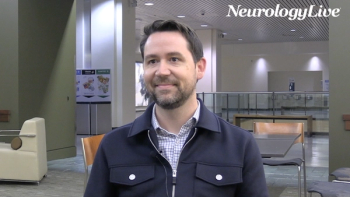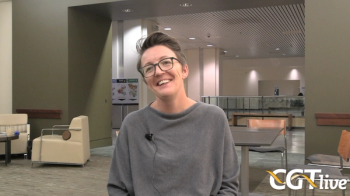
Where are the Biggest Bottlenecks in Cell and Gene Therapy?
Deborah Phippard, PhD, and Renier Brentjens, MD, PhD, discussed major friction points in cell and gene therapy development and uptake in the current day.
This is the second part of a transcript of a Special Report with Deborah Phippard, PhD, and Renier Brentjens, MD, PhD. For the first part,
The past 25 years, from 2000 to 2025, have been an unprecedented and rapid period of development of the field of cell and gene therapy. To get a perspective on how far we've come, and how far we have yet to go, CGTLive® reached out to Deborah Phippard, PhD, the chief scientific officer of Precision for Medicine, and Renier Brentjens, MD, PhD, the chair of the department of medicine and the deputy director at Roswell Park Comprehensive Cancer Center, to hold a Special Report discussion on the topic entitled: "Quarter Century Update: What’s Holding up Progress in Development? Where Have We Seen the Most?"
In this transcript of the second episode, Phippard and Brentjens zeroed in on cost and patient access, which they view as some of the biggest bottlenecks facing cell and gene therapy today. Phippard pointed out that many doctors still avoid recommending these therapies despite strong clinical results because of the complexity and limited availability of them. Brentjens concurred, drawing a comparison to the initial high cost of flat screen televisions upon their introduction to the market, and spoke on the gap in funding costs between preclinical and early clinical studies.
CGTLive: What would you say are the biggest bottlenecks in the cell and gene therapy field today? Manufacturing, regulation, cost, something else?
Deborah Phippard, PhD: I'm going to go with cost and access. There's lots of different ways of thinking about this, but I was really shocked to hear yesterday in a meeting—there was a chap up on stage talking about chimeric antigen receptor T-cell (CAR-T) therapy and basically saying there was recently a survey that said 66% of community health doctors in hematology said that a CAR-T therapy was just too difficult and they wouldn't recommend it for their patients. To me, that was so shocking that there is such a good therapy out there, but patient access is a huge challenge. We can talk about what the FDA has been doing to improve patient access, etc, but that to me was huge—if doctors are not even going to suggest it to their patients, then access is clearly a problem.
But I don't want to sort of downplay the fact that cost and manufacturing is just another another barrier that we are definitely working in the field to overcome. I would say these therapies have massive promise. We're going after diseases that we previously thought were hopeless, that the patients would die. We've clearly demonstrated efficacy in lots of different modalities, but rolling that out, I think, is going to be so challenging. I mean, I looked at the numbers in preparation for the conversation with you, and I think they said approximately 25,000 patients have received a CAR-T to date. That the same speaker yesterday here at Meeting on the Mesa said that it's his hospital that's planning to treat up to 350 patients next year. That's a very small fraction of patients that could benefit from these therapies. So I think there is huge promise, but we've got a long way to go before either cell or gene therapies are just available in general to patients who could benefit.
Renier Brentjens, MD, PhD: I completely agree with you with regard to the cost. There's 2 aspects on the patient side for the cost.
There's reason to believe these therapies become even more effective at an earlier line treatment—if we can identify the patients that won't benefit from standard chemotherapies and 6 regimens, etc.—if a significant portion of those patients are cured with CAR T-cells, then even at today's cost, you wind up saving money because of the number of lines of therapy that patients would go through after they unfortunately relapse, etc, etc.—those costs accumulate, the number of days they are in the hospital with fevers, etc, etc.
With regard to the other part on the patient side, I often remind people that when flat screen TVs came out, the cost of a flat screen TV was only affordable to a very small, select upper crust of society. But the cost came down. And in fact, today you could go to Costco, buy a flat screen TV, and still spend more money in the meat section than you do for the TV itself. So I do believe that if industry wants to and if the market is large enough, the cost for production can go down. I know this because in academic settings, we do not pay the amount of money that industry charges for the product.
The flip side of that, which is also a massive bottleneck, is still cost, and that is where novel approaches, novel constructs, and novel cell therapies are developed in the laboratory, and NIH funding and external funding can afford for us to test these new products in mice, but there's this massive chasm between preclinical and translational work. The funding to run those initial phase 1 trials for us, at least as far as developing the field beyond where it is right now, is an issue. It can cost on a very tight budget anywhere from 3 to many more million dollars just to run a 9 to 18 patient phase 1 clinical trial.
As such, I think that the bottleneck for getting patients the drug is cost, and the bottleneck for developing new and better-designed CAR T-cells and other cell therapies is also cost. So there's costs on both ends: both to promote and to provide equitable access to these drugs, but also to promote development of the next generation of cell therapies that would be able to target a much broader population, [such as] those that have solid tumors and other issues. So cost from start to finish is an issue, I completely agree with you.
This transcript has been edited for clarity.
Newsletter
Stay at the forefront of cutting-edge science with CGT—your direct line to expert insights, breakthrough data, and real-time coverage of the latest advancements in cell and gene therapy.











































